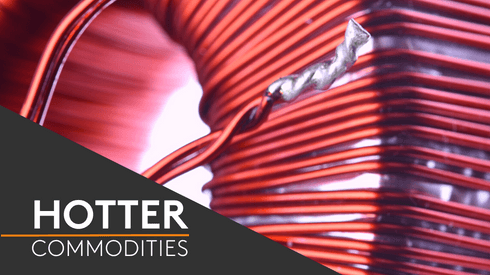Copper production disruptions will slow the fall in TCs
Production disruptions at several Chinese copper smelters will slow the decline in treatment and refining charges (TCs/RCs) for copper concentrates, delegates told Fastmarkets at the forum.
China’s copper consumption growth to slow
Strong growth in copper demand in China, in line with the rapid development of its economy over the past two decades, is unsustainable, Hu Changping, deputy secretary general at the China Non-ferrous Industry Association (CNIA), told delegates.
Chinese copper consumption surged nearly five-fold to 11.2 million tonnes in 2017, from 1.88 million tonnes in 2000, due to the booming development in major copper applications in the real estate, automotive and transportation sectors.
Along with China’s stringent regulation of the development of the real estate market in the past two years, and the removal of incentives in the vehicle industry, the decelerating trend of copper demand in these two fields has started to turn upward again.
“The estimated demand rise for copper will come from the commercialization of the 5G network in China, with no positive data indicating an obvious rise in demand in other areas,” a market source said.
China’s copper consumption over the past 17 years peaked at 11.64 million tonnes in 2016, according to data from CNIA, but whether that marks a turning point in Chinese consumption cannot be certain yet.
Additionally, CNIA data suggests that, among the 15 major copper consumption countries or areas, which together use 80% of the world’s copper, 12 have already reached such a demand turning point, the exceptions being China, Turkey and Brazil.
The 12 other countries and areas are the United States, Germany, Japan, South Korea, Italy, Taiwan, India, Russia, France, Mexico, Belgium and Spain.
Jiangtong Guoxing to start production
Jiangtong Guoxing Copper will be commissioned in the first half of 2021, and will have capacity for 180,000 tonnes per year of copper.
Jiangxi Copper owns 65% with the remaining shares owned by Guoxing Copper. Annual output of gold and silver will be 11.9 tonnes and 147.5 tonnes respectively.
The company plans to expand capacity to 400,000 tpy after the completion of construction for the initial 180,000 tpy, and to extend the production line to downstream copper processing.
SHFE to launch more metal-related futures
The Shanghai Futures Metals Exchange (SHFE) is an important metal bourse on a par with UK’s London Metals Exchange and the United States’ Chicago Mercantile Exchange (CME). It is now engaged in launch preparation work for an alumina futures contract, senior manager Zhou Lichen at the SHFE’s commodity trading section I told forum delegates.
The launch of the contract comes after serious fluctuations in alumina supply and price since the world’s major alumina producer, Norsk Hydro’s Brazilian Alunorte refinery, slashed its output by 50% from 6.4 million tpy.
This was ordered for nationwide inspections to be carried out, following an accident at an iron ore tailings dam at a Vale-owned mine in February 2018.
Fastmarkets’ daily alumina index, fob Australia, rocketed to a historic high of $707.75 per tonne on April 24, 2018, and was volatile in a wide range of $350-700 before the embargo on Alunorte was removed in mid-May this year.
“The launch provides an additional tool of risk management resulting from the violent price change,” a market source explained.
Zhou also noted that the SHFE was scheduled to launch futures contracts for aluminium alloy, cobalt and silicon in the next year, with a feasibility study on aluminium and gold options on the way.
[Editor’s note: This article was updated on July 17 to clarify that the Shanghai Futures Exchange is planning to conduct a feasibility study on aluminium and gold options.]





